Dornier Flugzeugwerke Video - Picture
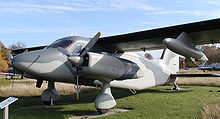
|
|

Picture - Dornier Do 28 D-2 SKYSERVANT
Dornier Flugzeugwerke
Dornier Flugzeugwerke was a German aircraft manufacturer founded in Friedrichshafen in 1914 by Claudius Dornier. Over the course of its long lifespan, the company produced many notable designs for both the civil and military markets.
History
Originally Dornier Metallbau, Dornier Flugzeugwerke took over Flugzeugbau Friedrichshafen production facilities (Weingarten, Warnemx¼nde, and the former Zeppelin shed at Manzell) when it failed in 1923. Dornier rose to prominence in the 1920s and 1930s as a manufacturer of large, all-metal flying boats, including the 1924 Wal (English: Whale) and the Do X. Dornier also built a series of successful land planes, including the Komet (Comet) and Merkur (Mercury) that were used by Luft Hansa and other European carriers during the 1920s and early 30s. Dornier built its aircraft outside Germany during much of this period, in compliance with the restrictions placed on German aircraft manufacturers by the Treaty of Versailles. Foreign factories licence-building Dornier products included CMASA and Piaggio in Italy, CASA in Spain, Kawasaki in Japan, and Aviolanda in the Netherlands. Once the Nazi government came to power and abandoned the treaty's restrictions, Dornier resumed production in Germany.

Picture - Do 31
Dornier's most significant military aircraft design before and during World War II was the Do 17, nicknamed The Flying Pencil. It was developed and first flown in 1934 as a commercial aircraft in competition for a Lufthansa contract. Due to its narrow fuselage (hence its nickname) it was not commercially attractive and was passed over by Lufthansa. Dornier then further developed it as a military aircraft with a prototype bomber first flying in 1935. It was employed by Rebel forces in 1937 during the Spanish Civil War. Production continued within Germany and this versatile two-engined aircraft was developed by the Luftwaffe into multiple combat variations. The medium bomber variant saw much service during the early part of World War II including extensive use in the Battle of Britain. It was later developed into an effective nightfighter to defend Germany from the RAF bomber offensive. Dornier developed the successful Do 217 based on the Do 17; ostensibly looking like its younger sibling, this larger and much heavier bomber was in fact a completely new design. Of note, Dornier also developed the fastest piston-engined fighter of the war, the two-engined Do 335, introduced too late to enter combat service.
Dornier's history of successful flying boats (the "Wal" family) lead to new models that saw service in several armed forced around the world as well as Germany, including the Do 22, Do 18, and Do 24.
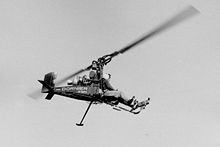
Picture - Do 32
After WWII, aircraft production was again forbidden in Germany, and Dornier relocated to Spain and then to Switzerland where the firm provided aeronautical consultancy services until once again returning to Germany in 1954. Post-war, Dornier quickly re-established itself with highly successful small STOL transports such as the Do 27 and Do 28. Additionally, in 1974 it developed the Alpha Jet as part of a joint venture with French aircraft manufacturers Dassault-Breguet. The plane was well received and established itself as the new standard NATO trainer during the 1970s and 80s.
In 1985 Dornier became a member of the Daimler-Benz group integrating its aeronautic assets with the parent company. As part of this transaction, Lindauer Dornier GmbH was spun off, creating a separate, family-owned firm, concentrating on textile machinery design and manufacturing. The rest of the company was split into several subsidiaries for defence, satellites, medtech and aircraft.
In 1996 the majority of Dornier Aircraft was acquired by Fairchild Aircraft, forming Fairchild Dornier. This company became insolvent in early 2002. Production of its 328 Jet was acquired by US company Avcraft. Asian interests continued to show interest in its 728 version in August, 2004, but production had not re-started. The other subsidiaries became part of the EADS, the medtech division was sold to an investment company and now bears the name Dornier MedTech.
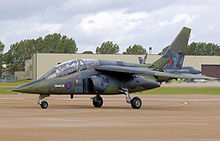
Picture - Dassault-Breguet/Dornier Alpha Jet of the UK defence technology organisation QinetiQ
Dornier Medtech manufactures medical equipments, such as the Dornier S lithotriptor, HM3, Compact Delta to treat kidney stones. Dornier MedTech also manufactures laser devices for a wide range of applications.
Dornier Aircraft Projects
Before 1930
Dornier Delphin
Dornier Do C Komet
Dornier Do J (Wal)
Dornier Do K
Dornier Do N
Dornier Do R
Dornier Do Y
Dornier Y
Dornier P
Dornier Do X
1930-1945
Dornier Do 10
Dornier Do 11
Dornier Do 12
Dornier Do 13
Dornier Do 14
Dornier Do 15
Dornier Do 16
Dornier Do 17
Dornier Do 18
Dornier Do 19
Dornier Do 22
Dornier Do 23
Dornier Do 24
Dornier Do 26
Dornier Do 212
Dornier Do 214
Dornier Do 215
Dornier Do 216
Dornier Do 217
Dornier Do 247
Dornier Do 317
Dornier Do 335
1945-Present
Dornier Do 25
Dornier Do 27
Dornier Do 28
Dornier Do 29
Dornier Do 31
Dornier Do 32
Dornier Do 128
Dornier 228
Dornier Do 231
Dassault/Dornier Alpha Jet
Dornier 328
Fairchild Dornier 328JET
Fairchild Dornier 528JET
Fairchild Dornier 728JET
Fairchild Dornier 928JET
Dornier Seawings Seastar
Dornier S-Ray 007
Dornier Automobile Projects
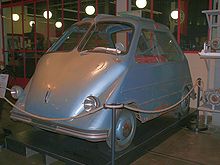
Picture - Dornier Delta
Dornier Delta
Dornier Delta II, developed for Hymer
Dornier Faint Object Camera
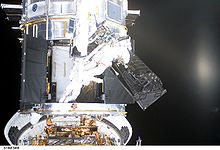
Picture - NASA astronauts of Space Shuttle mission STS-109 remove FOC during an EVA
Dornier GmbH built the Faint Object Camera for the Hubble Space Telescope, which was used from 1990 to 2002. The ESA funded the unit, which actually consists of two complete and independent camera systems designed to provide extremely high resolution, exceeding 0.05 arcseconds. It is designed to view very faint UV light from 115 to 650 nanometers in wavelength. It was the last original instrument on the Hubble when it was replaced by the Advanced Camera for Surveys in 2002.
Dornier Flugzeugwerke Pictures and Dornier Flugzeugwerke for Sale.
Living Warbirds: The best warbirds DVD series.
Source: WikiPedia